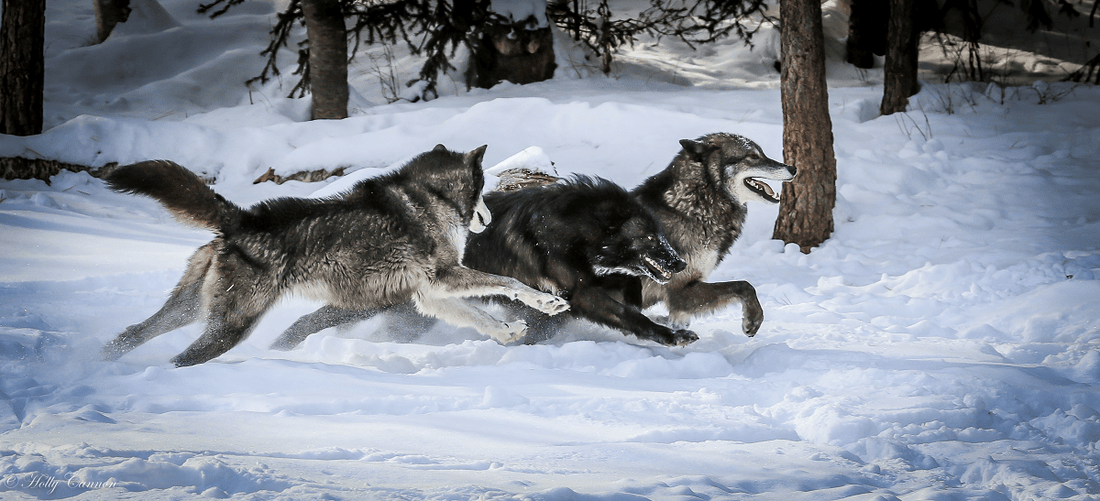The Resilient Balance: The Rising Wolf Population and its Impact on Minnesota's Whitetail Deer
In recent years, the wolf population in Minnesota has experienced a significant resurgence, sparking debates and concerns about its impact on the local ecosystem. One particular area of contention revolves around the relationship between the increasing wolf population and the whitetail deer population. This article seeks to explore this complex dynamic, drawing on scientific reports, journals, and findings from the Minnesota Department of Natural Resources (DNR), to shed light on the intricate interplay between wolves and whitetail deer in Minnesota's wilderness.
The Resurgence of Wolves in Minnesota:
Over the past few decades, Minnesota has witnessed a remarkable recovery of its wolf population. Once on the brink of extinction, wolves have made a remarkable comeback due to dedicated conservation efforts and the implementation of protective measures. According to the DNR's recent reports, the wolf population in Minnesota currently stands at an estimated 2,655 individuals, a significant increase compared to the historical lows of the mid-20th century (Minnesota DNR, 2021).
Predator-Prey Relationship:
Understanding the relationship between predators and prey is crucial to comprehending the potential impact of the increasing wolf population on whitetail deer. Wolves are top-level predators, and their presence inevitably influences the dynamics of the ecosystems they inhabit. Whitetail deer, on the other hand, are a primary food source for wolves. The interaction between these two species is a delicate balance, with each exerting selective pressures on the other.
Scientific studies have offered valuable insights into the impact of wolves on whitetail deer populations. A study conducted by Peterson et al. (2017) in northeastern Minnesota explored the relationship between wolf predation and deer abundance. The researchers found that areas with higher wolf densities experienced lower deer populations due to increased predation pressure. However, they also observed that the overall health and condition of the deer population in those areas was significantly improved, as wolves selectively targeted weaker and diseased individuals, ultimately strengthening the herd's genetic composition.
Another study by Vucetich et al. (2012) in Isle Royale National Park, Michigan, examined the effects of a declining wolf population on the moose population, a primary prey species. The research demonstrated that when wolf numbers declined, moose populations surged, leading to overbrowsing and detrimental effects on the ecosystem. This study emphasizes the vital role of predators in maintaining ecological balance and preventing overpopulation of prey species.
The Minnesota DNR has been closely monitoring the relationship between wolves and whitetail deer in the state. Their research suggests that while wolves do have some impact on deer populations, other factors such as habitat quality, hunting pressure, and disease outbreaks play significant roles in shaping deer abundance (Minnesota DNR, 2021). The DNR emphasizes the importance of considering a holistic perspective when assessing the influence of wolves on deer populations, as multiple factors contribute to population dynamics.
The increasing wolf population in Minnesota has prompted discussions about its impact on the whitetail deer population. Scientific studies and research findings from the Minnesota DNR demonstrate that wolves do exert pressure on deer populations, primarily through predation. However, these studies also highlight the positive ecological effects of wolves in maintaining the health and genetic diversity of deer herds. It is essential to consider the broader ecological context and understand that multiple factors influence deer populations, including habitat quality and human activities such as hunting.
As Minnesota continues to manage its wildlife populations, striking a balance between predator and prey is crucial. Conservation efforts aimed at maintaining healthy wolf populations while also supporting sustainable deer populations should take into account the complex interactions between these species. Through collaborative research, adaptive management strategies, and ongoing monitoring, policymakers and wildlife managers can make informed decisions that promote the long-term stability and resilience of both the wolf and whitetail deer populations.
In conclusion, the increasing wolf population in Minnesota has undoubtedly impacted the whitetail deer population. Scientific reports, studies, and findings from the Minnesota DNR offer valuable insights into this complex relationship. While wolves exert predation pressure on deer populations, they also contribute to maintaining the health, genetic diversity, and ecological balance of deer herds. Understanding and managing these dynamics requires a comprehensive approach that incorporates multiple factors influencing deer populations, including habitat quality, hunting pressure, and disease outbreaks. By embracing an ecosystem-based perspective and employing adaptive management strategies, Minnesota can strive for a harmonious coexistence between wolves and whitetail deer, ensuring the long-term vitality of its wilderness.
